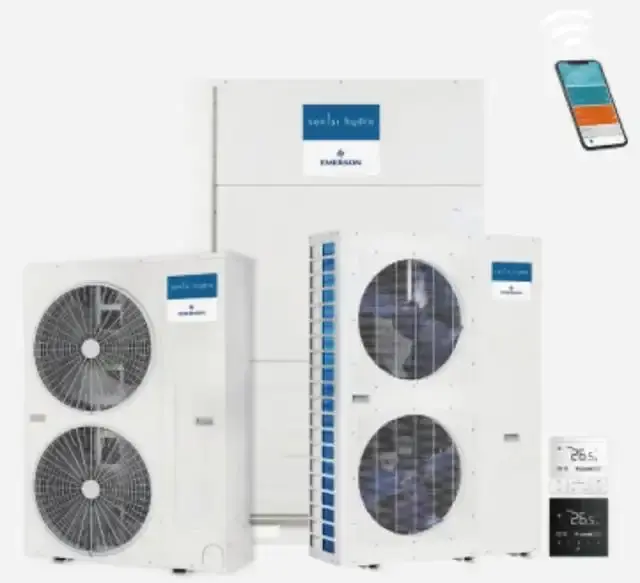Centralized HVAC Solutions for Houses and Villas
- Kai Zhang
- Apr 19, 2024
- 3 min read
Updated: Jun 16, 2024
There are some centralized cooling and heating solutions for houses and villas, just for your reference.
Solution 1: Refrigerator Air Conditioner and Wall Mounted Boiler:
Advantages: Air conditioner for cooling in summer and wall mounted boilers for heating in winter; The air conditioning and heating effects are guaranteed.
Disadvantages: Wall mounted boilers have high energy consumption for heating, especially in areas with high gas costs, resulting in high costs for later use.

Solution 2: Refrigerator Air Cooling and Underfloor Heating Dual Supply:
Advantages: In summer, air conditioning for cooling, and in winter, the connect with water system for heating; Both air conditioning and heating effects are guaranteed;
Disadvantages: The cooling comfort of air conditioning in summer is not good as water chillers; In winter heating is more energy-efficient than wall mounted boilers; Due to the electrification of some systems, the energy-saving effect is not good as the water unit system.

Solution 3: Air Source Heat Pump Combined Heating and Cooling:
Scope of application: Suitable for comfort air conditioning and underfloor heating;
Advantages: Comfortable cooling in summer and energy-saving heating in winter; A single unit for both summer cooling and winter heating; The energy-saving performance of underfloor heating is about 50% higher than that of conventional wall mounted boiler systems;
Disadvantage: It is a new solution, some people don’t know it and won’t accept it.
Solution 4: Ground Source Heat Pump Combined Heating and Cooling:
Scope of application: Suitable for houses with sufficient outdoor well drilling areas, or with a large garden area; and there is comfort demand for cooling and heating;
Advantages: Comfortable cooling in summer and energy-saving heating in winter;
Disadvantage: Most ground source heat pumps are fixed frequency and are not suitable for places with less population and low air conditioning demands.

Solution 5: Capillary Air Conditioning System:
System introduction: It uses a thermal conductive plastic tube of d3.35X0.5mm as the capillary tube and a plastic tube of d20X2mm as the header, and forms capillary mats of different specifications and sizes through hot melt welding. Mainly laying on the ceiling, supplemented by laying on the walls and floors;
Advantages: No indoor units, less noise; High radiation comfort,
Disadvantages: Currently, control technology is mature, and improper installation and debugging still pose a risk of indoor ceiling and wall condensation; In addition, in extreme cases such as having guests at home and having a large number of people, it is necessary to have a fan to assist in cooling; High requirements for thermal insulation performance of building maintenance structures.

Solution 6: All-air HVAC System:
Advantages: No indoor units in each room, low noise; The air-handling unit can be equipped with humidification blocks, dehumidification blocks, and purification modules. The central air conditioning system of the all-air system air ducts to centrally input fresh air into each room, and centrally control and reasonably adjust indoor temperature, humidity, and cleanliness;
Disadvantage: All indoor air ducts are used, making troubles for construction and decoration coordination.

Solution 7: Cold Beam System:
Cold beam: It is an end device for air water heat exchange guided by fresh air, which is divided into active cold beam and passive cold beam according to whether fresh air is introduced;
Active cold beam: The outdoor fresh air is processed by the air conditioning box to form dry cold primary air, which is sent into the cold beam and sprayed out at high speed through the nozzle, forming a local negative pressure inside the box. This induces the secondary air near the indoor cold beam to pass through the cold water coil, and after being cooled by the heat exchanger, it mixes with the primary air and is sent into the room through the enclosed guide grooves on both sides, with a temperature lower than the room temperature. After such a cycle, the indoor heat is carried away by the cooling coil. Similarly, in winter, hot water is used in the heat exchanger, and the cold beam plays a heating role;
Passive cold beam: Similar in appearance to active cold beam, but without fresh air, driven solely by the density difference between cold and hot air;
Advantages: No motor, low noise,
Disadvantage: When losing control, condensation water will be generated. In order to ensure that the cold beam does not produce condensation, a condensation prevention device needs to be installed.

Please find a professional HVAC solution provider to help you figure out which kind of centralized HVAC solutions you need for your houses or villas.






















Comments